Birds bring life, color, and a sense of serenity to any garden. Their songs can transform a quiet backyard into a lively oasis, and watching them up close can be a deeply rewarding experience. One of the best ways to attract birds to your yard is by offering a cozy, safe place for them to nest: a birdhouse.
The great news is that building birdhouses doesn’t require a large budget or professional carpentry skills. With a little creativity and some basic materials, you can craft DIY birdhouses that are functional, attractive, and perfectly suited to your garden’s aesthetic. In this article, we’ll explore creative DIY birdhouse ideas, step-by-step construction tips, and advice on placement and maintenance to welcome feathered friends into your outdoor space.
Why Build a Birdhouse?
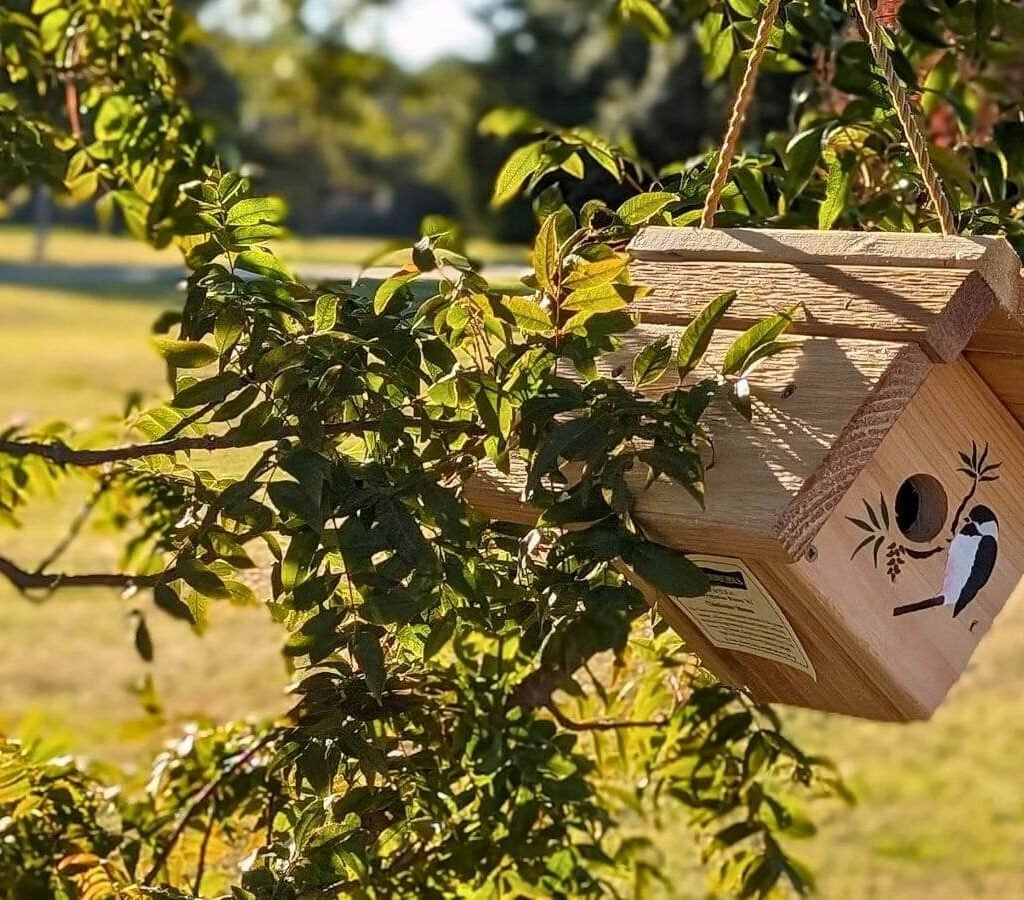
Before diving into DIY ideas, it’s important to understand the benefits of adding birdhouses to your garden:
- Provides Shelter: Protects birds from predators and harsh weather.
- Encourages Nesting: Attracts a variety of bird species, supporting local biodiversity.
- Natural Pest Control: Birds help control insects and other pests in your garden.
- Educational and Fun: Great for children to learn about birds and nature.
- Decorative Appeal: Birdhouses add charm, color, and creativity to any outdoor space.
A well-designed birdhouse meets the needs of specific bird species while complementing your garden décor.
Step 1: Choose the Right Materials
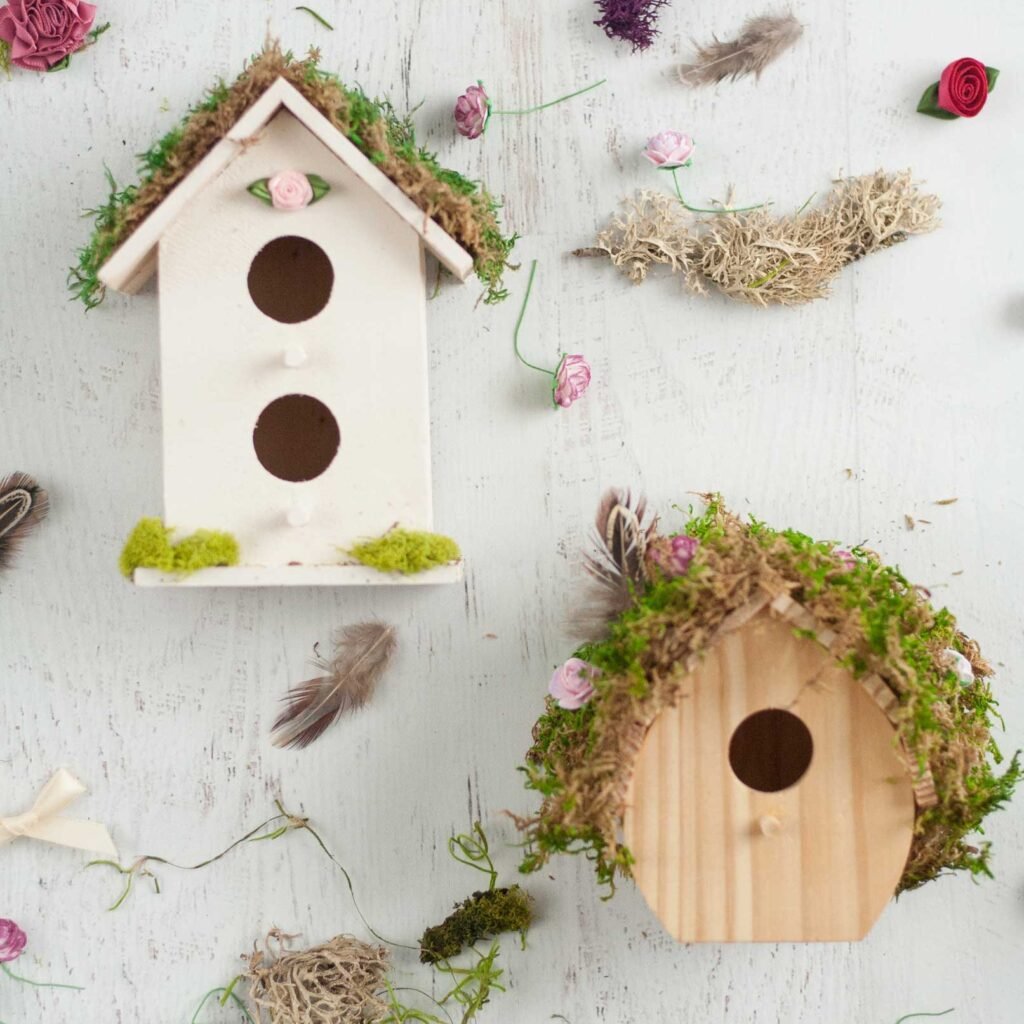
The first step in building a birdhouse is selecting safe, durable, and weather-resistant materials. Common options include:
- Wood: Cedar, pine, or redwood are ideal as they resist rot and provide insulation. Avoid treated or painted wood that may be toxic to birds.
- Recycled Materials: Old wooden crates, boxes, or pallets can be repurposed into charming birdhouses.
- Plastic or PVC: Lightweight and waterproof, though less natural in appearance.
- Natural Elements: Bamboo, gourds, or logs for rustic, eco-friendly birdhouses.
Pro Tip: Avoid materials that absorb too much heat, like thin metal or dark-painted surfaces, which can overheat the birds inside.
Step 2: Design Your Birdhouse
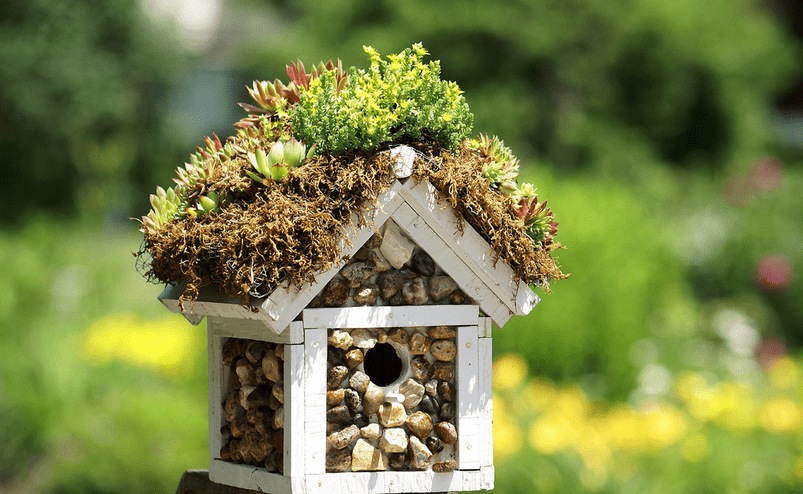
Different bird species prefer different house designs. Consider:
- Size of the Entrance Hole:
- Small songbirds (wrens, chickadees): 1–1.25 inches in diameter.
- Bluebirds: 1.5 inches.
- Larger birds (woodpeckers, owls): 2 inches or more.
- House Dimensions: Ensure enough room for nesting but avoid excessive interior space that may be difficult to keep warm.
- Ventilation and Drainage: Small holes or gaps at the top and bottom allow airflow and prevent water buildup.
- Roof Design: Sloped or overhanging roofs protect against rain and snow.
- Decorative Touches: Paint, stencils, or natural textures can add charm but avoid bright colors that may scare birds.
Step 3: Simple DIY Birdhouse Ideas
Here are some creative and easy-to-build birdhouse designs:
1. Classic Wooden Box Birdhouse
A traditional design that suits most backyard birds:
Materials: Wooden planks, nails, wood glue, hinges (optional), sandpaper.
Steps:
- Cut wooden planks for the base, walls, and roof.
- Assemble walls with nails or screws, ensuring a tight fit.
- Attach the roof with a slight overhang.
- Drill an entrance hole sized for your target bird species.
- Sand edges to avoid splinters.
Tip: Add a small perch below the entrance if desired, but many species don’t need it.
2. Recycled Milk Carton Birdhouse
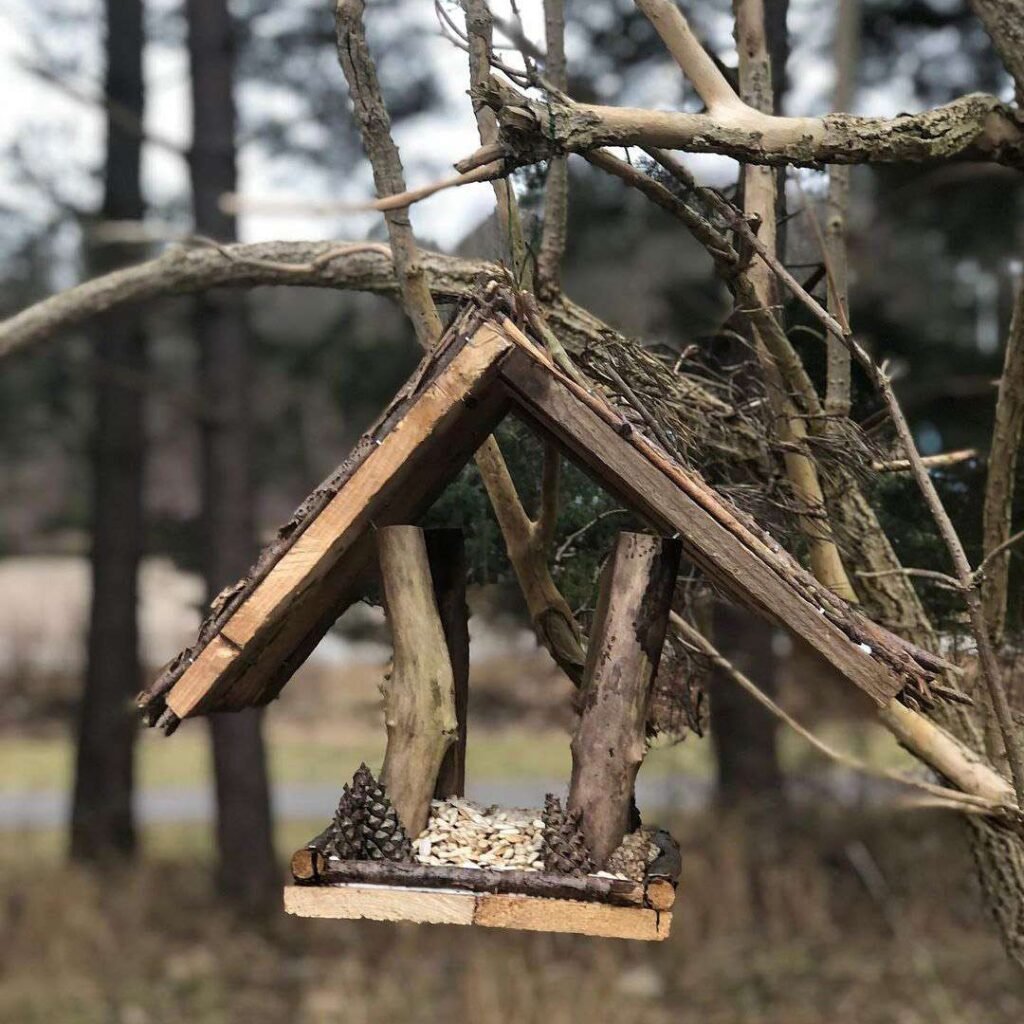
An eco-friendly option using everyday materials:
Materials: Empty milk or juice cartons, scissors, string, paint (optional).
Steps:
- Clean and dry the carton thoroughly.
- Cut a small entrance hole near the top.
- Punch two holes on opposite sides for hanging.
- Decorate with paint or natural patterns.
- Fill the bottom with a small amount of straw or nesting material.
Tip: Hang in a sheltered area to protect from rain.
3. Gourd Birdhouse
Gourds provide natural insulation and a rustic look:
Materials: Dried gourd, drill, sandpaper, wire for hanging.
Steps:
- Clean the gourd thoroughly and remove seeds.
- Drill an entrance hole appropriate for your bird species.
- Sand rough edges.
- Drill small drainage holes at the bottom.
- Hang with wire or rope from a tree branch.
Tip: Natural gourds blend seamlessly with gardens and forests.
4. Upcycled Wooden Crate Birdhouse
Perfect for a rustic or cottage-style garden:
Materials: Small wooden crate, nails or screws, paint or varnish, twine.
Steps:
- Turn the crate on its side.
- Cut an entrance hole in one side.
- Secure a roof or cover with additional wood planks.
- Drill drainage holes at the bottom.
- Hang or place on a post.
Tip: Use untreated crates to ensure safety for birds.
5. Pallet Birdhouse with Multiple Compartments
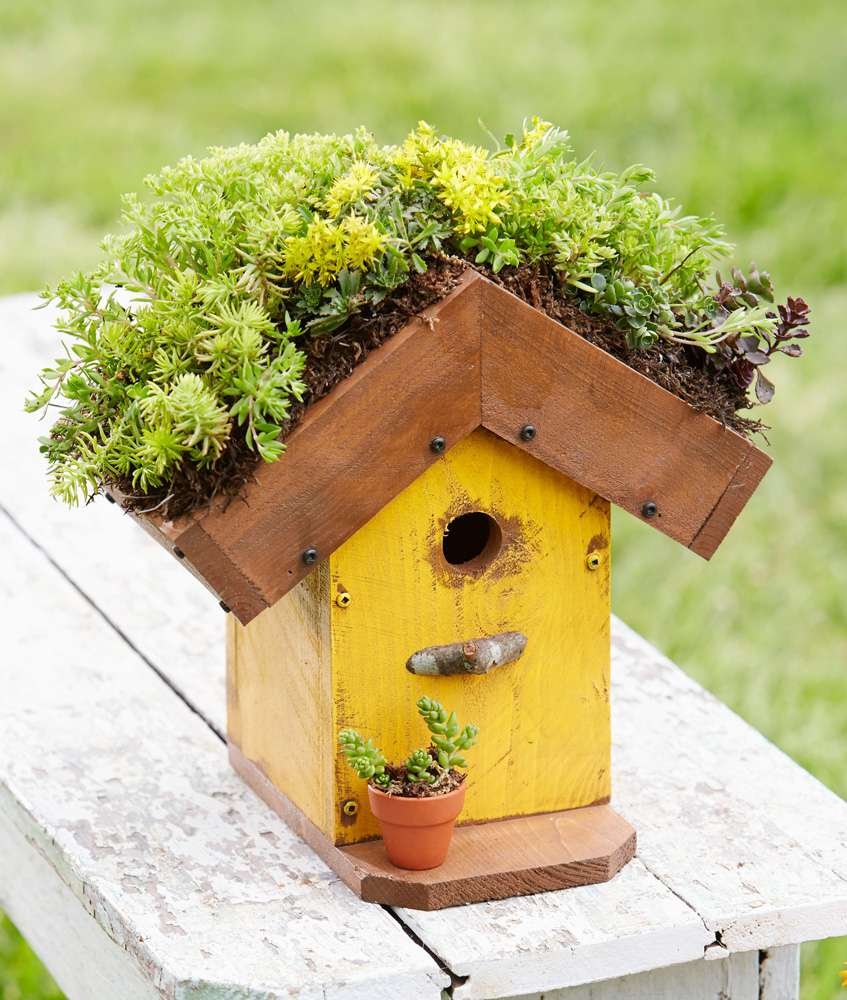
Ideal for attracting multiple families of birds or small species colonies:
Materials: Wooden pallet, nails, wood glue, small planks for roofs.
Steps:
- Separate pallet slats and create multiple box compartments.
- Attach slats to form individual birdhouse units.
- Drill entrance holes for each compartment.
- Add overhanging roofs to protect from rain.
- Secure on a wall, post, or tree.
Tip: Great for wrens and sparrows that enjoy colony-style nesting.
Step 4: Placement Tips
Where you place your birdhouse can make all the difference in attracting birds:
- Height: 5–10 feet above ground is ideal for most small birds.
- Protection: Avoid placing near predators such as cats.
- Shelter: Choose a location with partial shade and some wind protection.
- Spacing: Leave enough distance between multiple birdhouses to prevent territorial disputes.
- Orientation: Face the entrance away from prevailing winds and direct sunlight.
Pro Tip: Trees and shrubs nearby provide birds with cover while they enter and leave the birdhouse.
Step 5: Maintain Your Birdhouse
Regular maintenance ensures your birdhouses remain safe and inviting:
- Clean Annually: Remove old nests and debris to prevent parasites.
- Check for Damage: Repair or replace rotting wood, broken roofs, or loose panels.
- Monitor Occupancy: Keep track of which bird species are using your houses.
- Protect from Pests: Use predator guards or baffles if necessary.
- Repaint Sparingly: Avoid toxic paints; natural wood or bird-safe stains are ideal.
Benefits of DIY Birdhouses
- Cost-Effective: Use inexpensive or recycled materials.
- Customizable: Tailor designs for specific bird species or garden aesthetics.
- Eco-Friendly: Supports local wildlife and promotes biodiversity.
- Educational: Engages children and adults in learning about nature and bird behavior.
- Decorative: Adds charm and creativity to your outdoor space.
Conclusion
Building DIY birdhouses is a rewarding project that benefits both your garden and the birds that visit. From classic wooden boxes to recycled gourds and cartons, there are countless creative ways to craft safe and attractive homes for your feathered friends.
By choosing the right materials, designing birdhouses for specific species, placing them thoughtfully, and maintaining them regularly, you can create a welcoming environment that encourages birds to nest, sing, and thrive in your backyard. Not only will you enjoy their beauty and music, but you’ll also contribute to local wildlife conservation while adding a decorative, personalized touch to your garden.
A backyard filled with chirping birds is a living testament to your creativity, care, and connection to nature. DIY birdhouses make that vision achievable for gardeners of all skill levels.
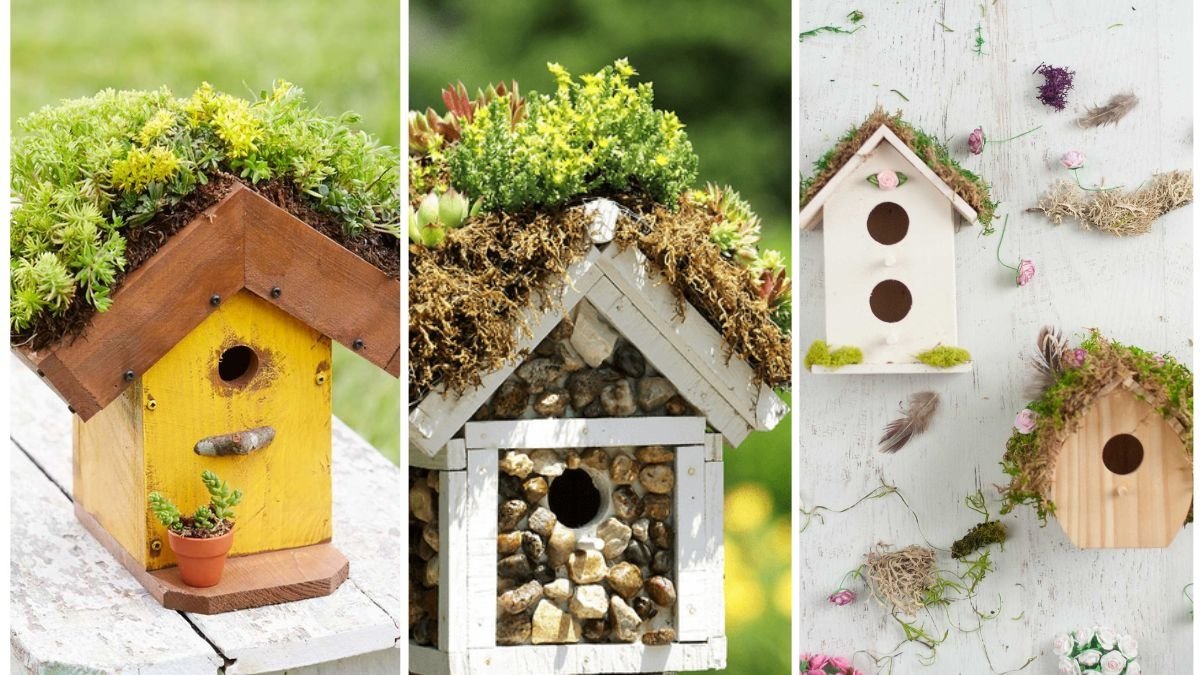
Leave A Comment